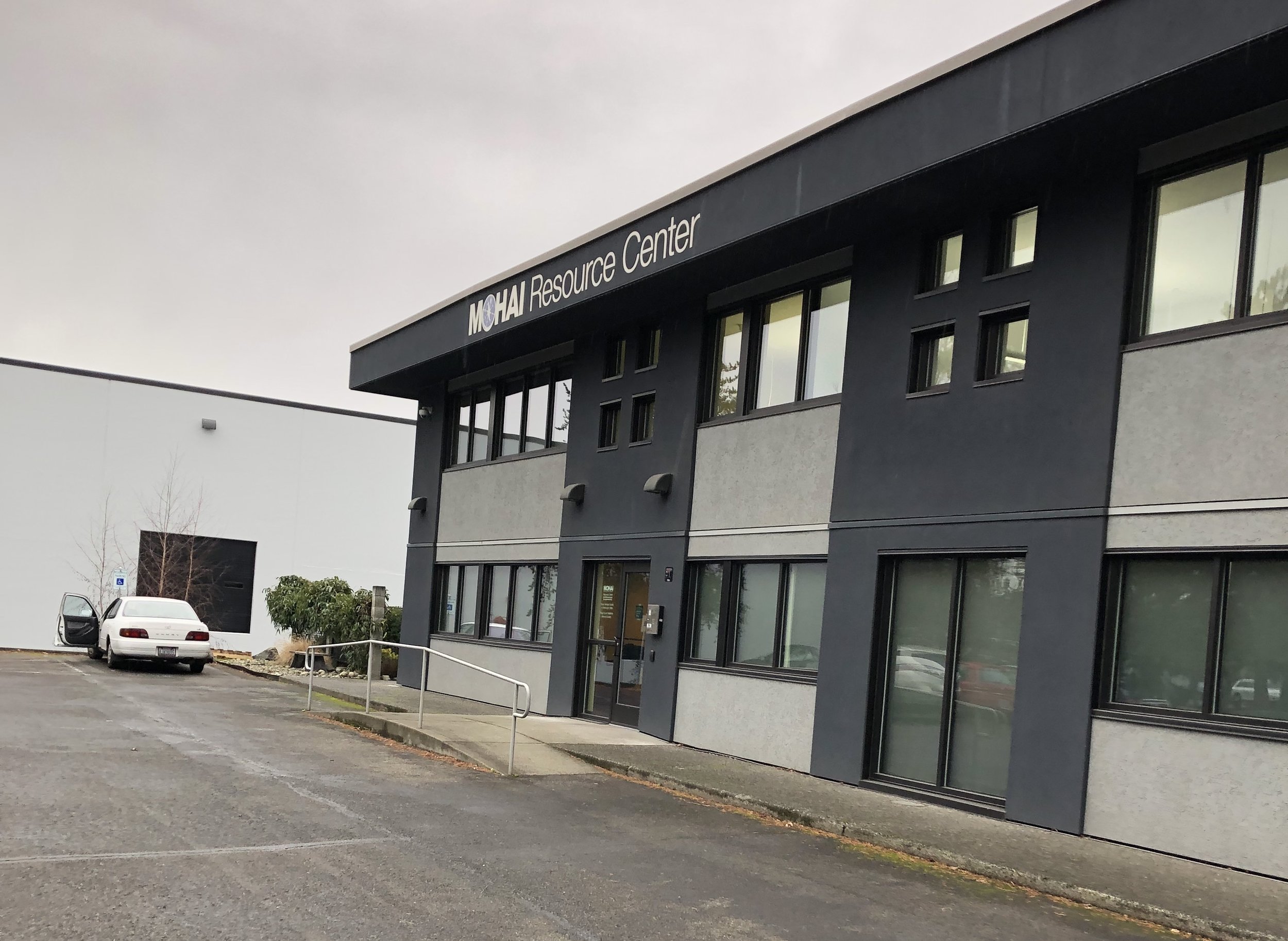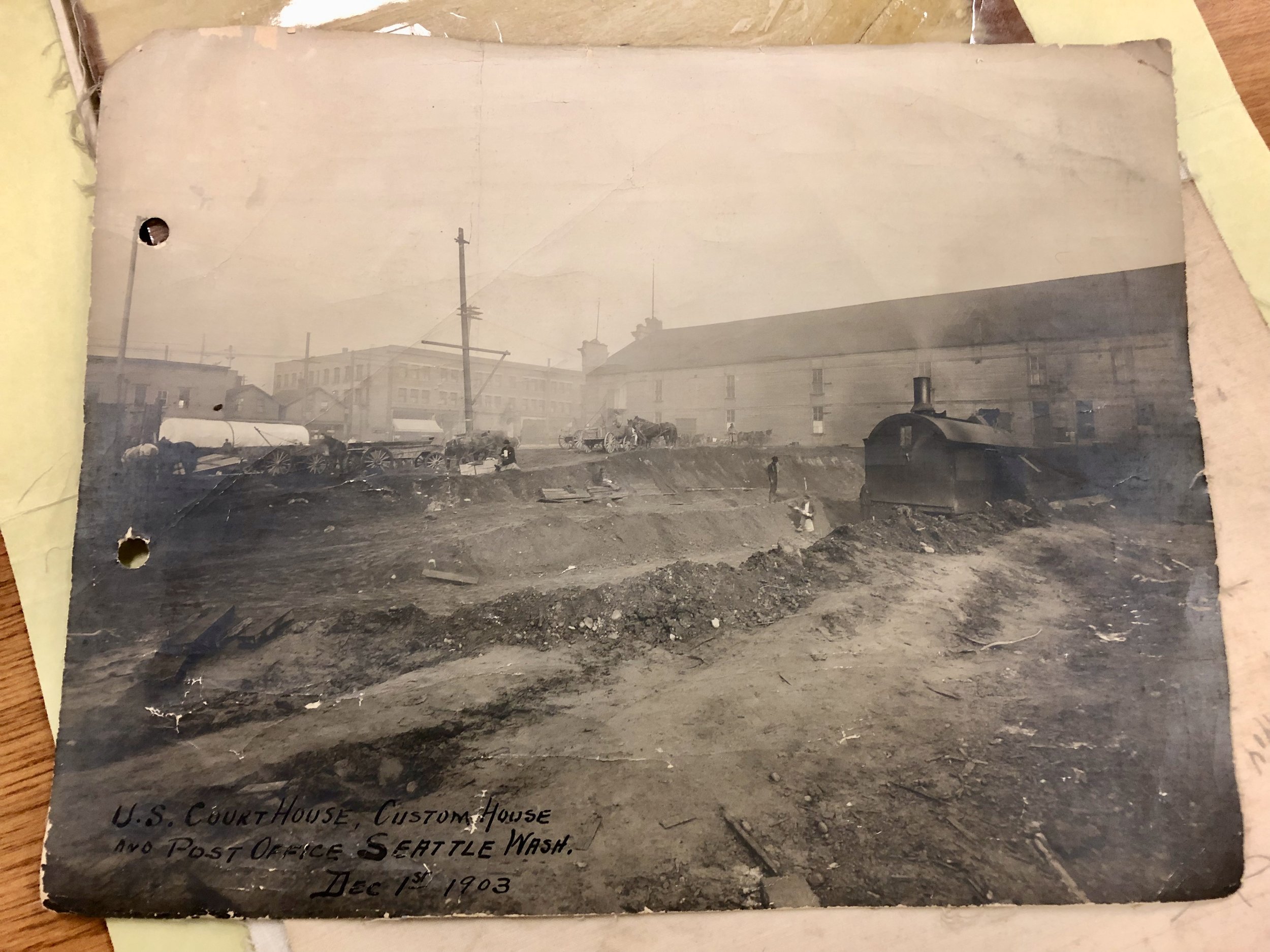A Visit to the MOHAI Archives
As part of my consulting work, I am researching the narrative and visual history of transportation along Third Avenue from Yesler Way to Denny Way. This objective has provided a terrific opportunity to visit some of our vital local archives. On January 18th, I scheduled an appointment at the Museum of History and Industry (MOHAI) Resource Center.
The exterior of the MOHAI Resource Center, at a former marble showroom.
Located in Georgetown, the Center inhabits a former marble showroom. MOHAI moved the collection to Georgetown as part of the museum’s relocation to South Lake Union.
MOHAI stewards two collections of particular interest for my project:
Collection on the Pacific Outfitting Company, 1907-1991
Collection Number: 2008.3.18 (accession)
Finding Aid: http://archiveswest.orbiscascade.org/ark:/80444/xv64495
The Pacific Outfitting Company was founded in 1907 by Alfred Shemanski, who immigrated from Poland to Seattle. The store sold clothing, and had a flagship store at Third Avenue and University Street (where Benaroya Hall is now). The collection includes photographs and brochures of the store, which also depict the transportation modes on the street - horse and carriage, streetcars, and automobiles.
Negatives on the light table with Pacific Outfitting Co. advertisements.
Here is an intriguing (and rare early view) of the store’s interior, ca. 1910:
Image courtesy MOHAI - Image # 2008.3.18.4
In a further transportation connection, a 1949 brochure advertises uniforms for Seattle bus drivers. As noted in the brochure, the Pacific Outfitting Company has been operating since the “Trolley Days.”
Price List brochure dated October 1, 1949 advertising Seattle Transit System uniforms. and equipment
View of the store facing southwest on Third Avenue, ca. 1970s.
The collection also contains the manuscript “Cheerful Credit,” which provides a colorful history of the company compiled from interviews transcribed with the executives. The store eventually closed in 1991.
Seattle Post Office Photographs and Other Material, 1889-1962
Collection Number 1972.5319 (collection)
Finding Aid: http://archiveswest.orbiscascade.org/ark:/80444/xv68076
Initially in reading the finding aid, I was interested in viewing building photos of the downtown post office, located at Third Avenue and Union Street. What I discovered was much more - photographs of employees, including at parades and other events.
1903 view showing the site of the to-be-constructed Seattle Post Office at Third Avenue and Union Street amidst street regrade activities. The post office had moved multiple times before landing in its current location on Third Avenue.
View of the 37th Biennial Convention of the National Association of Letter Carriers on Parade. The parade occurred on Third Avenue.
These two distinct collections provide another context to understand the transportation history of Third Avenue. Although the subject matter is focused on something else, I enjoyed connecting the dots. A few of the images showing the postal worker parades on Third Avenue even included the Pacific Outfitter Co. store in the background!
I would like to thank Adam Lyon at MOHAI with the Library Services team for all his help to locate these resources and facilitating my visit.








